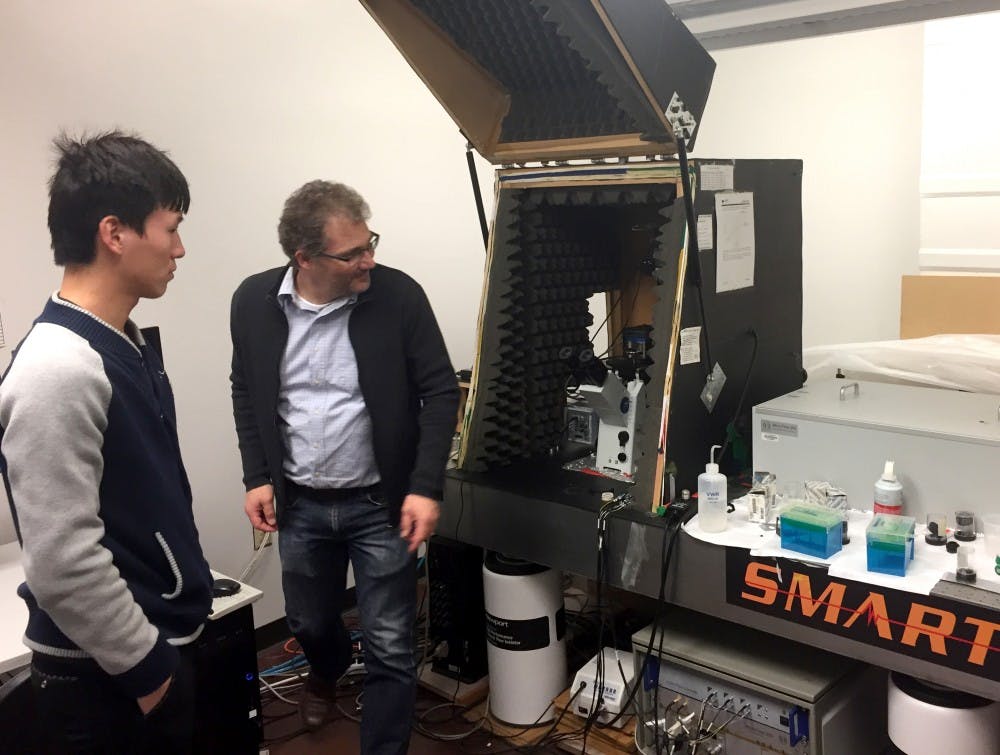When sight fails, ASU researchers experiment through touch.
A group of ASU biophysics scientists are using atomic force microscopy (AFM) to shed light on how cells work on a tiny scale. Their work may contribute to antibiotics and cancer investigations.
“We are interested in applying physical methods and developing new methods for fundamental biological problems,” said Robert Ros, director of the Center of Biological Physics at ASU.
Although his team uses imaging techniques in concert with AFM, many of their methods revolve around this force-based process, Ros said. Approaching these problems through a physics perspective allows for more discrete information, Ros said, which can be used for more concise biological predictions.
“These quantitative tools are essential for building up models,” Ros said.
Nethmi Ariyasinghe, a grad student working with Ros, uses AFM to study cancer.
“You can sort of imagine it being a finger, but on a nanometer scale, where you can get information about the surface or even poke it,” Ariyasinghe said.
AFM uses prodding to measure the force applied to a cell and how much that force displaces its surface, she said.
Because animal tissue is soft, AFM is not able to achieve the same resolution as in inorganic cells, the team said. Despite this challenge, the team said the process is useful.
Using this technique, Ariyasinghe said she is able to gather data about molecules inside of cells.
“I am studying the DNA of different types of cancer and noncancer cells to see if there is any difference that we can tell between the cancer and the noncancer,” Ariyasinghe said.
Unfortunately, progress marches slowly with cancer research, she said.
“Are we going to cure cancer with one method?" Ariyasinghe said. “Probably not, but is it going to be a small step towards the progress of learning more about what makes cancer tick ... then yes.”
Graduate student Kiarash Rahmani also studies cancer but focuses on improving the research methods themselves, he said.
“Usually I do force measurements with AFM to study the mechanical properties of cells and hydrogels,” Rahmani said.
He said that hydrogels, an extremely absorbent gel, mimic various animal tissues. By developing better hydrogels, Rahmani said that researchers will be able study cancer as it grows in an environment more similar to human tissue.
“Previously, we’ve been practicing on how to fabricate the gel so it has the specific space for the tumor to go … and at the same time it doesn’t collapse the whole structure,” Rahmani said.
The stiffness and fiber length of the gel, which should emulate biological tissue, are also problematic, he said. Despite these impediments, he said the research is bearing fruit.
“Now we are able to develop really good samples,” Rahmani said.
But the team doesn't only research cancer. Jiawei Liu, also a graduate student, uses AFM to study salmonella.
“Mostly, I’m studying the mechanical properties of the two types of bacteria and seeing what the differences are,” Liu said.
He said he focuses on the bacterial mutations — how the bacteria changes between generations. By introducing antibiotics to the mix, Liu said he is able to see how bacteria responds and evolves in the presence of this medicine.
According to the World Health Organization, “Antibiotic resistance is present in every country” and constitutes a global threat because it reduces the efficacy of medicine. Through researching how bacteria evolves in the presence of antibiotics, the team said they hoped to understand how antibiotic resistance occurs, and how to stop it.
Reach the reporter at chawk3@asu.edu
Like The State Press on Facebook and follow @statepress on Twitter.




